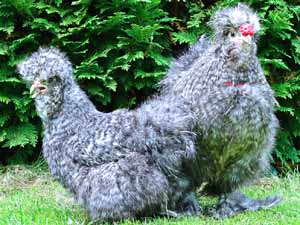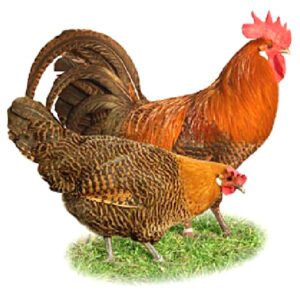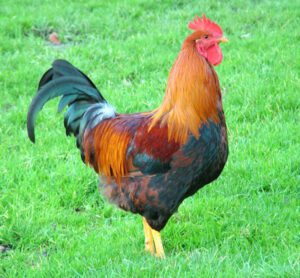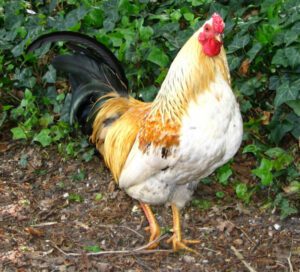Phoenix chicken is a beautiful bird which is typically raised as an ornamental breed. It is a long tailed chicken breed originating in German. It is an ancient breed and tracing its heritage back after a long time.
Hugo du Roi who was the first president of the National German Poultry Association created the Phoenix chicken in the late nineteenth century.
Numerous chicken breeds were used for creating this breed. A few delicate imported long tailed Japanese birds were cross-bred with some other breeds including Leghorn, Yokohama, Combattant de Bruges Kruper, Old English Game, Modern Game, Bruegge Game, Ramelsloher and Malay chicken.
There are many breeds of Long tail fowl in Japan. And the Phoenix chicken is a German creation from long-tailed fowls of Japanese descent. The breed has been found in the United States since before 1924. The Phoenix chicken was accepted into the American Poultry Association’s Standard of Perfection in 1965.
here are many color varieties and also a bantam version available. Currently Phoenix chicken breed is listed in the Threatened category of the American Livestock Breeds Conservancy’s Conservation Priority List.
Phoenix Chicken Characteristics
The Phoenix chicken has a pheasant-like appearance. And they are notable for their exceptional long tail. The tail may reach 90 cm or more. They have pure white earlobes, red wattles and a red colored single comb.
Their single combs are with five well defined upright points. And medium sized in males and smaller in females. Their wattles are also medium in size in males and small in females.

The earlobes are medium in size and oval in both males and females. Their beak has shades of horn and the eyes are reddish bay. The legs of Phoenix chicken are of slate color. And their skin color is yellow. The tail is carried horizontally in roosters and slightly higher in hens.
There are many color varieties of the Phoenix chicken and their plumage color vary depending on the variety.
Black variety has Standard black plumage, White variety has Standard white plumage, Silver variety has Standard silver plumage, Golden variety has Standard golden plumage, Golden Duckwing variety has Standard golden duckwing plumage, Silver Duckwing variety has Standard silver duckwing plumage and the Light Brown variety has Standard light brown plumage.
Standard Phoenix chicken is a medium sized bird. The standard Phoenix roosters weight about 2.5 kg and hens about 1.8 kg. And the bantam roosters weight about 0.74 kg and hens about 0.68 kg. Photo from Wikipedia.
Behavior/Temperament
Phoenix chickens are very gentle birds and very easily handled. They are also shy and friendly in nature. They can become tame and good as pets if handled from an early age. But as they have very long tail, so they require special care for keeping their tail feathers in good shape.
The birds should be kept up on high roosts the way parrots are to maintain these long tails. The Phoenix chicken is a very active breed with excellent flight skills. They are excellent foragers and good for free range system.
The Phoenix hens are good layers of small to medium sized cream or tinted colored eggs, and go broody frequently. Hens are also good mothers.
The Phoenix chicken require extra room inside their house which should be dry. And they require regular diet with high protein to maintain the extra large plumage. The breed is docile and do well in confinement. Review full breed profile of Phoenix chicken below.
| Breed Name | Phoenix |
| Other Name | None |
| Breed Purpose | Ornamental |
| Breed Temperament | Friendly, Talkative, Bears Confinement well, Aggressive, Wild/Restless, Flighty, Calm, Quiet, Shy, Easily Handled, Docile |
| Breed Size | Large |
| Broodiness | Frequent |
| Comb | Single |
| Climate Tolerance | Heat |
| Egg Color | Cream or Tinted |
| Egg Size | Small to Medium |
| Egg Productivity | Low |
| Feathered Legs | No |
| Rarity | Rare (The breed is listed in the Threatened category of the American Livestock Breeds Conservancy’s Conservation Priority List) |
| Varieties | Many color varieties are available. Which include: Black, White, Black Breasted Red, Silver, Silver Duckwing, Variegated, Golden, Golden Duckwing etc. |
| Country of Origin | Japan, Germany |





